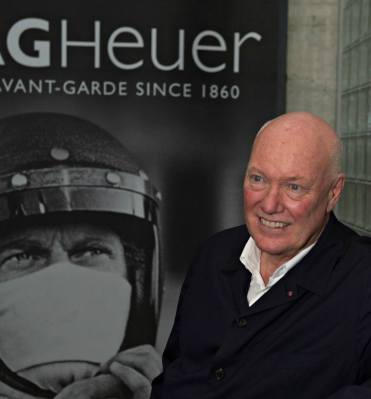Today the Swiss watch industry makes a major leap into embracing the smartwatch. LVMH Watch Group head Jean-Claude Biver is not a man to ignore pop culture and all that is modern even though he made his money running companies that sell traditional, mechanical watches. Today, sitting as the CEO of Swiss watchmaker TAG Heuer, he stands with representatives from Intel and Google announcing the first ever Android Wear-powered Swiss smartwatch. As recently as 2014 Jean-Claude Biver was an outspoken critic of smartwatches and what he felt was a slim value proposition to consumers of “traditional” watches whose marketing strategy often falls on offering a product that consumers can wear for many years. Biver and some of his colleagues have been extremely quick to point out that in their opinion the major failing of smartwatches is that consumers are asked to buy something potentially expensive that they will feel inclined to shelve as soon as something better comes out. Jean-Claude Biver is regularly referred to as one of the smartest and most dynamic people in today’s luxury watch industry and he has been able to open the entire industry up to new ideas.
Much of Mr. Biver’s success has credited to adopting new ideas and taking risks. His branding touched on the previously untapped worlds of luxury watch marketing and he spearheaded an effort to sell to the the hip hop music industry as well as the worlds of basketball and football. Now, this outspoken critic of the Apple Watch is behind a fresh collaboration that seeks to embed the smartwatch as a permanent part of the Swiss watch industry landscape.
Over the last few months, Jean-Claude Biver’s tone regarding the acceptability of smartwatches began to change. For Mr. Biver it now seems as though smartwatches are not the anathema of the mechanical watch industry, but instead a diversification path that the Swiss watch industry would be foolish to ignore. Tech companies who have released smartwatches have been widely criticized for (among other things) creating products that do not feel or look like the timepieces anyone actually wants to wear. I’ve personally suggested in the past that one successful formula for making the smartwatch relevant (and even exciting) is to combine the mutual talents of the Swiss watch industry and Silicon Valley. This seems to be precisely what TAG Heuer has done in partnership with Intel and Google’s Android Wear operating system.
Arguably one of Android Wear’s most serious challenges the dearth of actually attractive and useful smartwatch devices. Tech companies may try to emulate the look and feel of a traditional watch but none other than Apple have come even close to matching the quality, design, and detailing of a Swiss timepiece. Is there a market for a finely designed, premium smartwatch product that can compete on the same playing field as what is currently being made by the top timepiece brands from Europe?
TAG Heuer seems to think so, and may be a less than surprising partner for companies such as Intel who has dabbled in the wearables world but has yet to make a real splash. Back in 2008 when TAG Heuer was perhaps at the height of diversifying its brand, in addition to making timepieces TAG Heuer was actually producing other products like eyewear and luxury smartphones. That’s right: for a moment they tried to sell the Meridiist, a ritzy phone meant to compete with the lifestyle mobile phones made by Vertu.
TAG Heuer even went so far as to produce a smartwatch already – if you want to call it that. In 2013 the brand worked with Oracle Team USA during the America’s Cup to produce a small run of connected electronic watches known as the Aquaracer 72. These digital watches helped sailors see immediate and real time data about their ship while competing.
Bringing a smartwatch to market for a mainstream set of consumers is a different challenge than working for a well-funded team of a few people you are sponsoring the efforts (Larry Ellison’s America’s Cup sailing team) or producing a fancier version of an establish product like the cellphone. For instance, no one ever claimed that luxury smartphones were better than average phone, in many situations they are much worse. That was simply a different type of market than today’s still new smatwatch industry.
Whether or not the new TAG Heuer smartwatch will be a “good” smartwatch is actually less important than how quickly consumers overall adopt smartwatches. Once these new, connected wearable devices hit the mainstream there will quickly be a separation between those for most people, and those produced for the luxury buying demographic – and various companies have their own perspective on that. Recently, Swiss company Frederique Constant partnered with Fullpower’s Motion X technology to produce the MMT Horological Smartwatch platform that seeks to turn a traditional looking analog-dial timepiece into an activity tracker. Without a clear preference by consumers a successful smartwatch platform is something that is companies are looking to find. TAG Heuer takes the more typical approach to the smartwatch solution by going directly with a digital screen combined with their own high-end case construction and sense of modern, edgy styling. Here’s hoping they pull it off.
Ariel Adams is the founder of ABlogToWatch and is reporting this week from BaselWorld in Basel, Switzerland.
